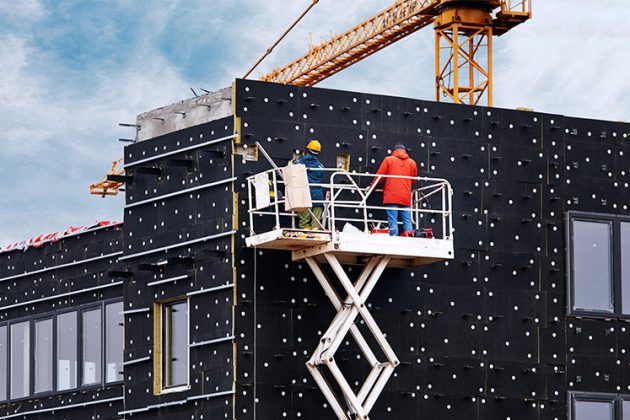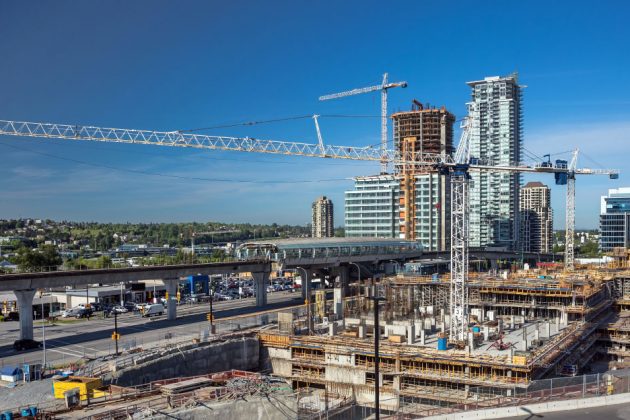The pandemic has left rippling effects in cities, most notably small businesses.
While these impacts arise from a number of factors – some of which have been brewing long before the pandemic – targeted research and thoughtful analysis uncovers a clear picture of current and ongoing issues, and potential solutions, to the difficulties facing small business in Metro Vancouver.
Retail-Commercial District Small Business Study
One example is the City of Vancouver’s ambitious new Retail-Commercial District Small Business Study, which was commissioned to collect data about retail businesses over a number of years. Published in 2020, the study surfaced several trends emerging between 2012 and 2019 that suggest neighbourhood shopping areas in Vancouver started their decline long before COVID-19.
Independent businesses are being displaced due to a confluence of circumstances, including competition from online retail, rising property taxes and lease rates, and shifting demographics and consumer preferences, with the global pandemic adding pressure to the pile. This displacement should be concerning to every city resident, as Local Shopping Areas (LSAs) are an important component of livability and sustainability: they offer local goods and services within walking distance of residents, shape each neighborhood’s unique character and culture, and generate direct employment opportunities.
The City of Vancouver’s study – which will be updated with new data every year – identified six business improvement association (BIA) areas whose LSAs are generally representative of the city’s overall LSA makeup: South Granville, West Broadway, Marpole, Collingwood, Hastings North and Commercial Drive. Employing a combination of data sets to analyze change over time – including primary research with landlords, businessowners, leasing agents and other stakeholders, supplemented by secondary research documenting current and emerging trends seen in Canada and beyond – the study found:
- An overall decrease in the number of properties owned by individuals and owner-occupied businesses, and an increase in properties owned by companies and developers.
- An overall decline in the number of storefronts.
- 13% decrease in the number of independent businesses (note this decline wasn’t consistent across categories: food and beverage businesses, for example, saw an increase of 21 independent businesses despite an overall decrease of 143 independent businesses).
- 24% increase in the number of chain businesses.
- Increases in commercial property taxes for all areas, ranging from 15% in South Granville to 47% in Marpole.
The City also recently completed an inventory of all retail commercial areas, and found vacancy increased from 9.3 percent to 12.1 percent between spring 2020 and spring 2021. There are now approximately 1,000 vacant commercial storefronts in Vancouver (up 30 percent compared to pre-pandemic levels).
Building on the foundation set by its first year, the City’s study will continue to monitor retail viability into the future, with a more complete picture of current and changing trends emerging year over year. These findings will help to clarify drivers impacting independent businesses, and support solutions related to planning, zoning and permitting.
Pandemic Effects on Canada’s Main Streets
Of course, COVID-19 has amplified the challenges that small businesses, shopping districts and main streets have experienced in recent years, creating new and heightened challenged that demand urgent action. In it Together: Bringing back Canada’s Main Streets was inspired by a nationally coordinated research and advocacy campaign championing the value of main streets to cities and assessing how they have been impacted by COVID-19. Informed by extensive consultation and research conducted by the Canadian Urban Institute and partners, the report aims to inform decision-making by policymakers at all levels of government with more than 80 actionable solutions, ideas and examples that can be used to support and promote recovery of main street businesses, organizations and communities.
Immediate recommended actions proposed in the report include:
- Promote and support year-round sidewalk cafes and patios by reducing or eliminating fees and allowing annual permits.
- Offer financial assist and waive fees for small businesses to mitigate the costs of COVID-19.
- Work with insurance providers and regulators to identify solutions for increasing insurance rates for main street small businesses.
- Provide funding for community and business organizations to animate public spaces and attract more people to main streets.
Policymakers and main street leaders across Canada are encouraged to use the report as inspiration to design their own action plan for their cities and communities.
However, these recovery efforts must account for other trends. Downtown cores are powerful drivers of storefront businesses and retail activity. However, this activity has diminished over the course of the pandemic, with many offices implementing hybrid work-from-home or 100 percent remote working models. Simultaneously, downtown residents and workers are trickling away from city centres in favour of living situations that are more affordable and spacious.
Impact of Remote Working on Downtown Vancouver
VEC commissioned a study to examine these trends and their prospective outcomes. The Remote Work, COVID-19 and Downtown Vancouver: Long-Term Impacts of Office Worker’s Experiences During the Pandemic on the City of Vancouver investigates the effects of remote work on economic activity in Vancouver’s Central Business District (CBD). Focusing on the pandemic’s influences on downtown Vancouver’s office space, tax revenue and residents, the study points to several notable trends:
- Canadian office workers hope to work remotely 2-3 days per week post-pandemic.
- These boosts in remote work rates are expected to decrease overall demand for office floorspace in CBDs and increase demand for residential properties in non-urban areas.
- Increased remote work rates could shift up to $927,798,360 of spending away from Vancouver’s CBD retail businesses and restaurants each year.
- Uneven impacts to women through the pandemic suggest the need for added childcare spaces.
Collectively, these three studies paint a stark picture of the pandemic’s influence on the future of cities. However, by taking urgent action – including the suggestions put forward by these studies – residents can reignite the colourful, vibrant and thriving centres we once knew, and the pave the way for a healthy and sustainable economic future.



